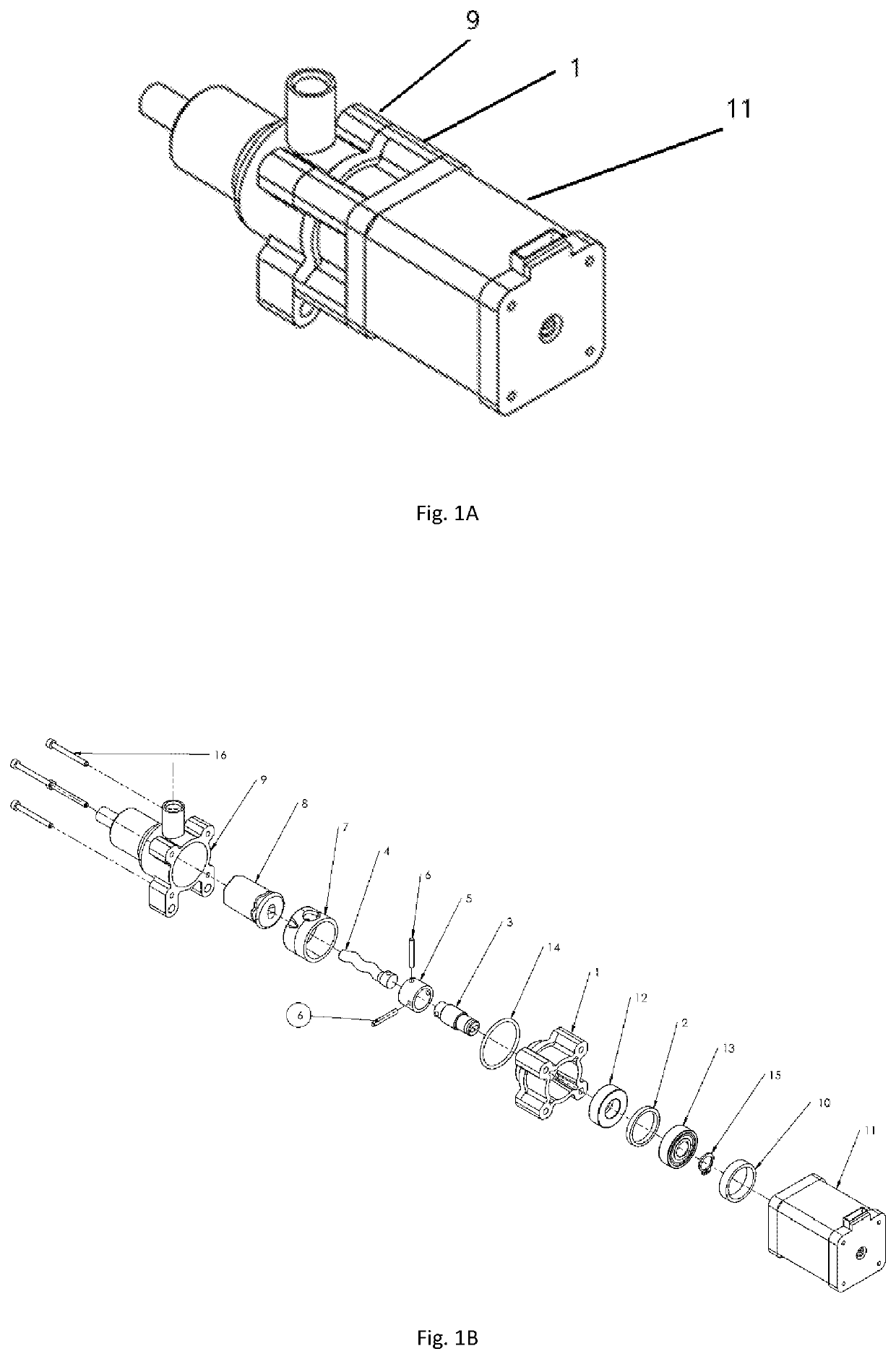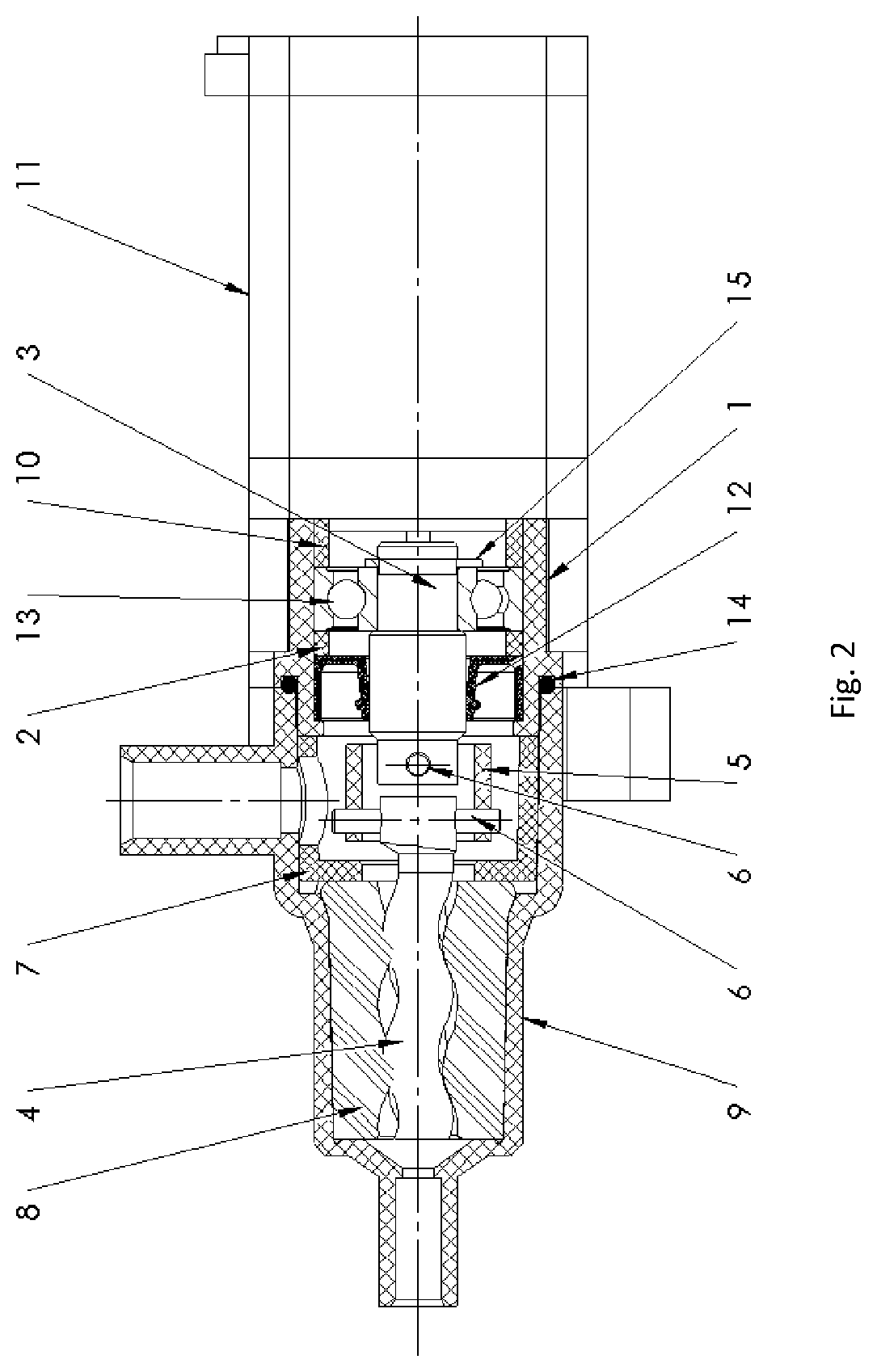Progressive cavity pump for the tintometric industry
a technology of progressive cavity and tintometric pump, which is applied in the direction of rotary/oscillating piston pump components, machines/engines, liquid fuel engines, etc., can solve the problems of high drive torque, low energy efficiency, and robust and high energy-consuming transmission systems, so as to facilitate the manufacture of components, reduce the length of the pump, and enhance the traditional constructive arrangement of tintometric applications.
- Summary
- Abstract
- Description
- Claims
- Application Information
AI Technical Summary
Benefits of technology
Problems solved by technology
Method used
Image
Examples
Embodiment Construction
[0016]In a plastic shell, referred to as upper body (9) (FIGS. 1A-2), obtained by injection process, the fluid input and output channels are present. These channels have housings for snap insertion of plastic hoses, dispensing with the use of threaded connections. This shell has cone-shaped internal housing, having over four sides, for assembling the stator (8) and, subsequently, cylindrical with two small radial locks for assembling a spacer (7). The hexagonal geometry of the housing of the stator results in its radial locking. The hoses are fastened by the dimensional interference relationship between the inner diameter of the housing and the outer diameter of the hose.
[0017]The rotor (4) is produced by machining a round bar made of metal or polymer material, depending on the application. Same has a circular section of a certain eccentricity along a helical step. Its helical length is 2 steps, which form 1 stage in a PCP. In it there is a small cylindrical, non-helical section to ...
PUM
 Login to View More
Login to View More Abstract
Description
Claims
Application Information
 Login to View More
Login to View More - R&D
- Intellectual Property
- Life Sciences
- Materials
- Tech Scout
- Unparalleled Data Quality
- Higher Quality Content
- 60% Fewer Hallucinations
Browse by: Latest US Patents, China's latest patents, Technical Efficacy Thesaurus, Application Domain, Technology Topic, Popular Technical Reports.
© 2025 PatSnap. All rights reserved.Legal|Privacy policy|Modern Slavery Act Transparency Statement|Sitemap|About US| Contact US: help@patsnap.com


